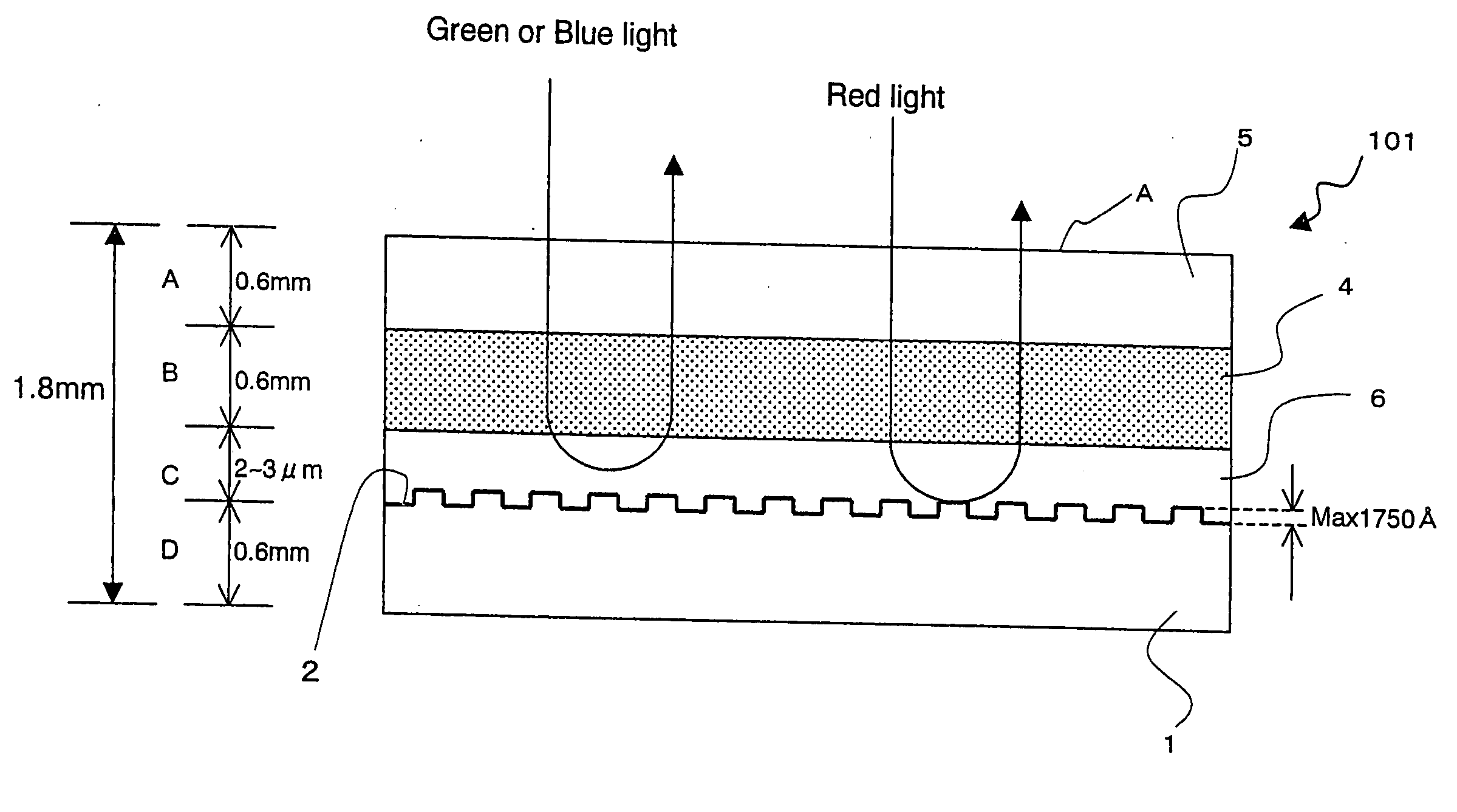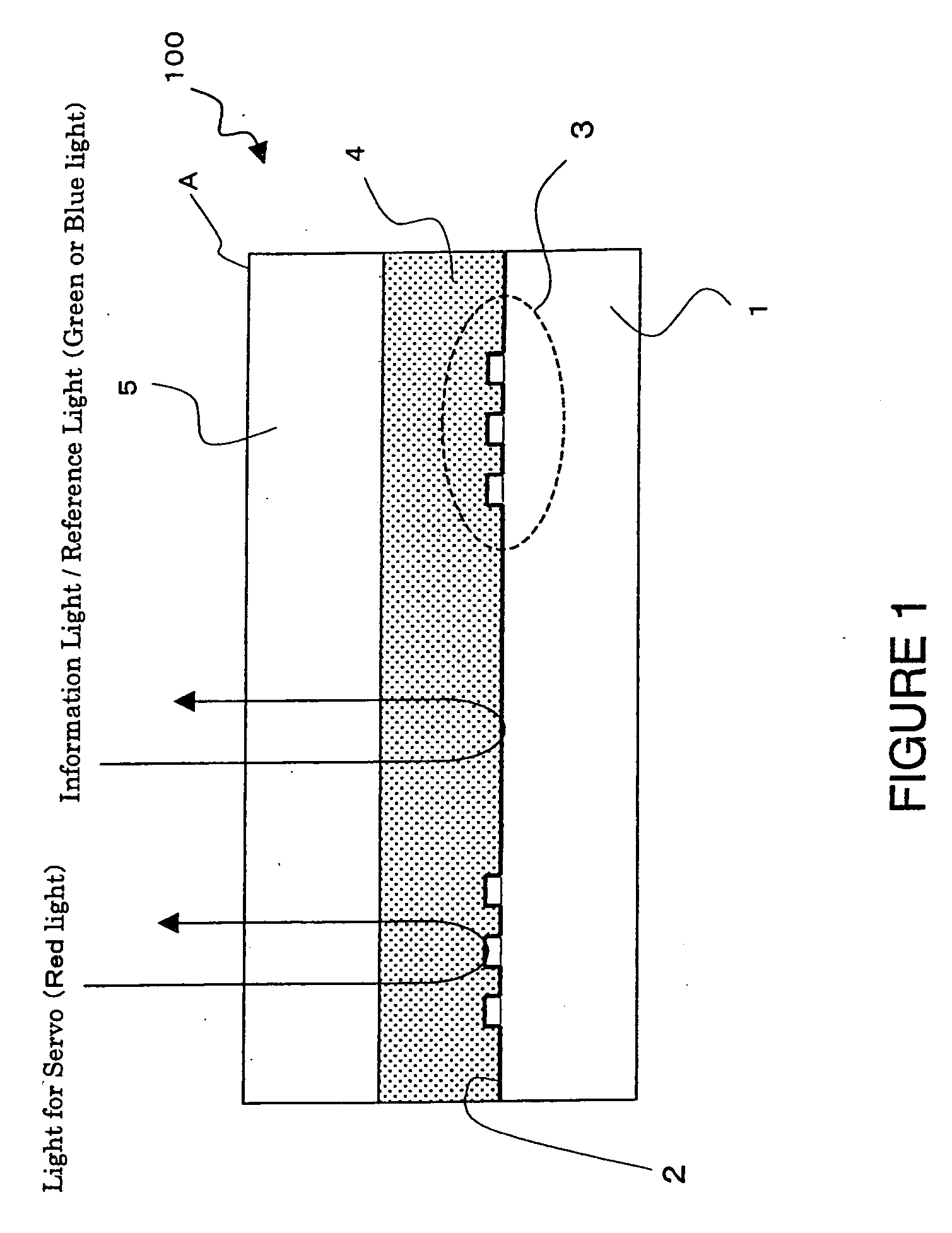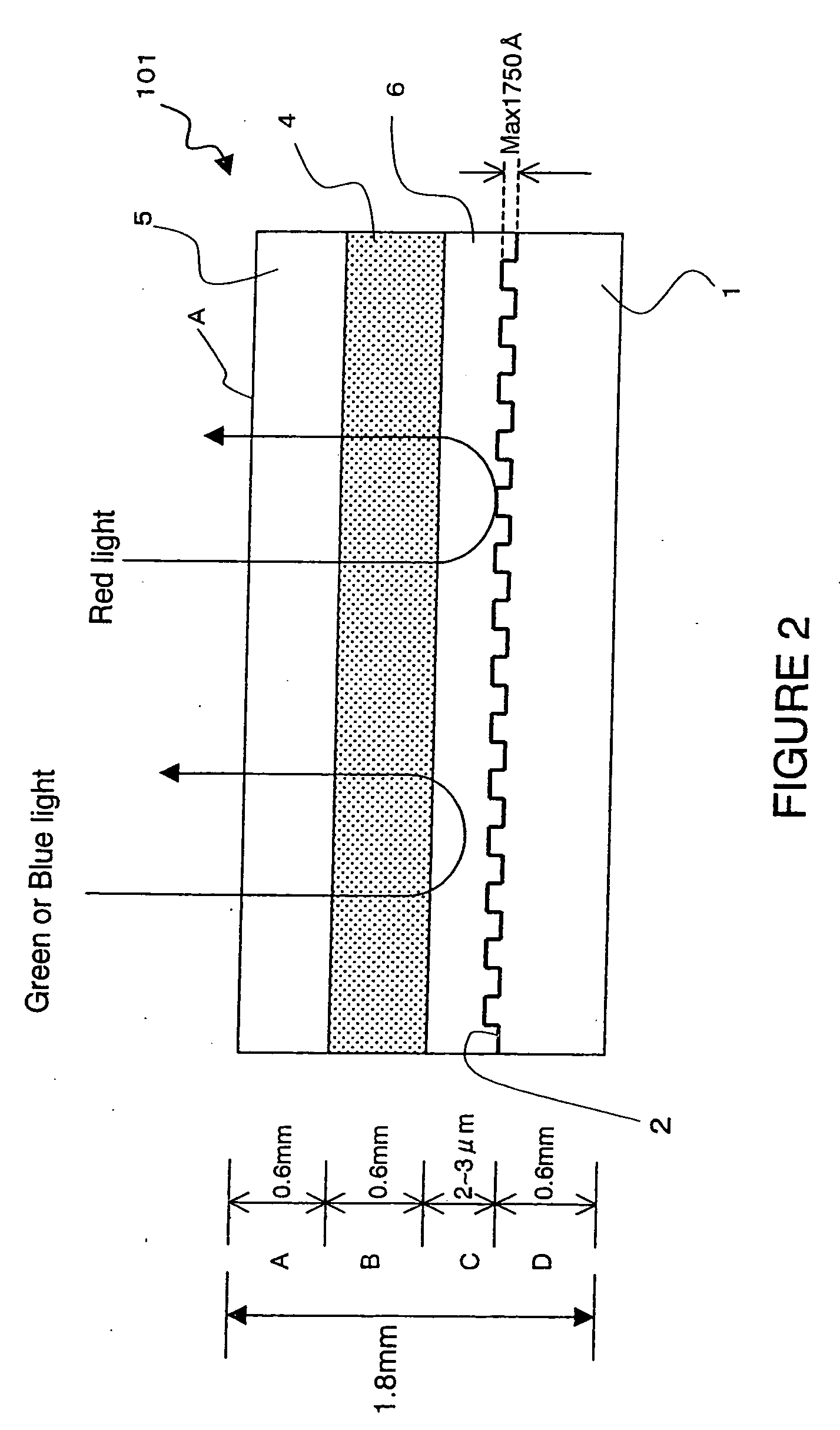Optical information recording medium
- Summary
- Abstract
- Description
- Claims
- Application Information
AI Technical Summary
Benefits of technology
Problems solved by technology
Method used
Image
Examples
first embodiment
[0021]FIG. 2 is a diagram showing the structure of an optical information recording medium according to a first embodiment. In optical information recording medium 101 according to the first embodiment, servo pit is formed on a polycarbonate or glass substrate 1 and is coated with aluminum, gold, platinum, etc. to provide a reflective layer 2. Although, unlike FIG. 1, servo pit is formed on the entire surface of the substrate in FIG. 2, it can also be formed cyclically as in FIG. 1. In addition, the height of this servo pit is 1750 Å maximum and is sufficiently small compared to the thickness of the substrate and other layers.
[0022] In addition, a red-colored light transmitting filter layer 6 is provided on substrate 1 with reflective layer 2 and optical information recording medium 100 is constructed by sandwiching hologram recording material which is hologram recording layer 4 between this layer 6 and upper substrate 5 (polycarbonate, glass, etc).
[0023] In FIG. 1, the red-colore...
second embodiment
[0027]FIG. 3 is a diagram showing the structure of an optical information recording medium according to a second embodiment. In optical information recording medium 102 according to the second embodiment, servo pit is formed on a polycarbonate or glass substrate 1 and is coated with aluminum, gold, platinum, etc. to provide a reflective layer 2. With regards to the height of this servo pit being a maximum of 1750 Å, it is the same as in the first embodiment.
[0028] The structural differences between the second embodiment and the first embodiment is that, in optical information recording medium 102 according to the second embodiment, there is a gap layer 8, a dichroic mirror layer 9 is provided in place of filter layer 6 of optical information recording medium 101, and furthermore, a quarter-wavelength board layer 7 is provided between dichroic mirror layer 9 and hologram recording layer 4.
[0029] Gap layer 8 is formed on reflective layer 2 of substrate 1 by applying spin coat or the...
third embodiment
[0035]FIG. 4 is a diagram showing the structure of an optical information recording medium according to a third embodiment. In optical information recording medium 103 according to the third embodiment, a cholesteric liquid crystal layer 10 is provided in place of dichroic mirror layer 9 in the second embodiment. Other structures are the same as the second embodiment.
[0036] The thickness of this cholesteric liquid crystal layer 10 is also 1 to 2 μm, and as with the other embodiments, the thickness of the entire optical information recording medium is approximately 1.8 mm.
[0037] Cholesteric liquid crystal layer 10 is formed by applying, for example, cholesteric liquid crystal CM-33 (Chisso Corporation product), which is a chiral dopant, after forming gap layer (smooth layer) 8, and spin-coating. Cholesteric liquid crystal has characteristics wherein light is reflected when circularly-polarized light of a predetermined direction is incident, and light is transmitted when other light...
PUM
 Login to View More
Login to View More Abstract
Description
Claims
Application Information
 Login to View More
Login to View More - R&D
- Intellectual Property
- Life Sciences
- Materials
- Tech Scout
- Unparalleled Data Quality
- Higher Quality Content
- 60% Fewer Hallucinations
Browse by: Latest US Patents, China's latest patents, Technical Efficacy Thesaurus, Application Domain, Technology Topic, Popular Technical Reports.
© 2025 PatSnap. All rights reserved.Legal|Privacy policy|Modern Slavery Act Transparency Statement|Sitemap|About US| Contact US: help@patsnap.com



